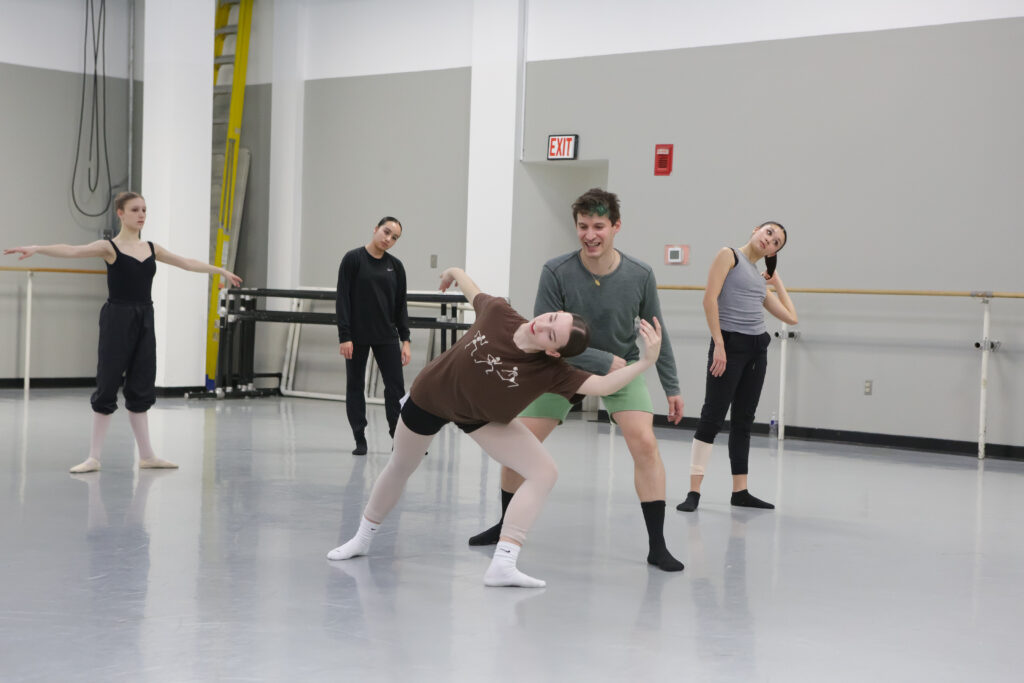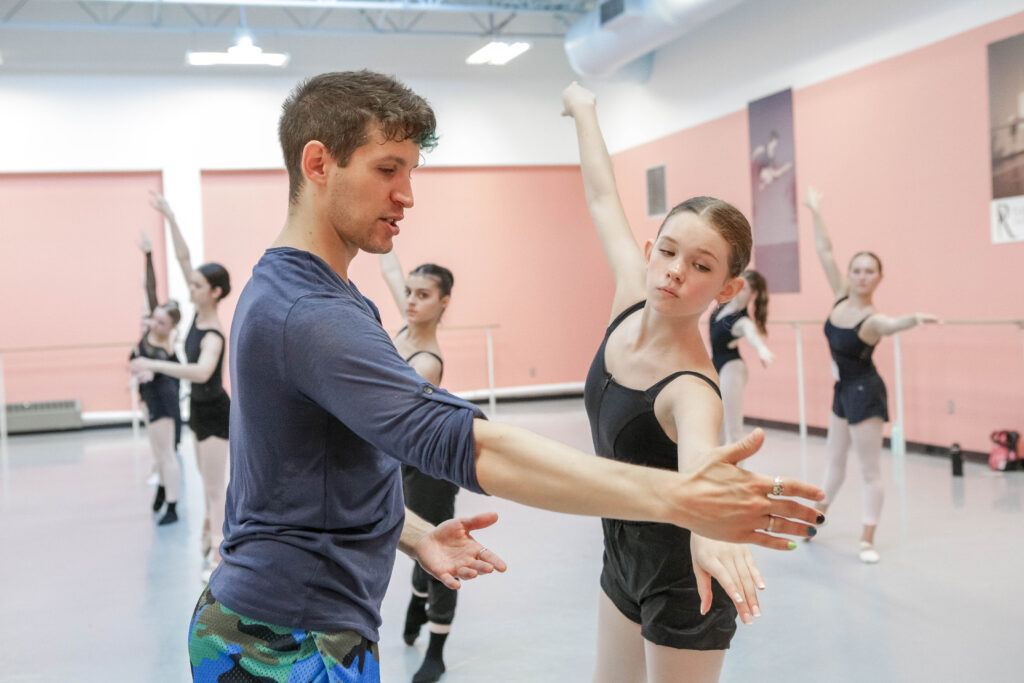
As a dancer, I have always been acutely aware that putting my body on display as art could field negative criticism. I received my first “fat talk” while attending a big-name summer intensive as a teenager in 2001. Shortly after transitioning from barre to center in our morning class, I was called upon for what appeared to be a technical correction. Yet, I quickly realized the feedback wasn’t fixable with a simple shift in alignment or transfer of weight.
“Last summer, you came to our intensive looking Mmmwah!,” a celebrated teacher exclaimed as he gesticulated with his hands moving tightly down the sides of his body. He clearly didn’t approve of the bulking up I had done at the request of my hometown teachers who alternatively felt I was too scrawny. Continuing my public shaming, “This year you’ve come back looking Mmmuhh…,” he said, retracing his hands more widely than before. As my peers uncomfortably giggled, I was encouraged to quit eating potato chips, which were not actually part of my regular diet. He moved forward with class as if this morsel of criticism would feed my hunger for improvement.

While I have many positive and negative memories from my training years, I frequently recount this moment as the foundation for confusion over my body image. Immediately following this, I took a long stare at my reflection and couldn’t see whether I was that scrawny kid bulking up at my hometown teacher’s request or this husky teen trying to flourish at a high-profile program. At the time, I felt generally unaffected by this feedback because, even at 17 years old, no one could criticize my body more vehemently than I already did. Considering the number of times I was told my body would be better suited for a career in modern dance over ballet, how could I not?
After finishing my training, I spent nearly a decade performing with dream ballet companies. Having a regular schedule of rehearsals and performances throughout those years, I now see this period as my physical prime. I have irrationally strived to maintain that form ever since.
Subsequently, I embarked on a freelance career traveling gig to gig across the country. Transitioning from a more consistent dance practice to a career where I flowed in and out of rehearsal periods, I supplemented vacancies in performance work with teaching and choreography. While I still put in a great amount of effort, my active hours in the studio decreased.
Gone were the days when my sole responsibility was taking class, rehearsing, and performing. If I wasn’t preparing a show, my time and energy were either spent at the front of the studio or on my computer procuring additional work. As a freelancer, I was performing many more tasks outside of physically intense rehearsals. I was acutely aware of how this affected my conditioning and stamina.
Glancing back, I understand how this period fed even more serious body dysmorphia that still dances with me daily. And while retirement allowed me to focus on sharing my passion for dance with others, it has also caused me to dig even more deeply into self-criticism of how I look.

Today, almost all of my time is dedicated to choreography and teaching, much of it as an independent contractor. I spend less time on personal fitness than I did at any other point in my life. Commuting up to 20 hours weekly to multiple jobs for survival and offering what downtime I have to students preparing for competitions, my schedule is often too intense to leave enough energy for additional physical activity. I waver in and out of a regular self-care practice. If a student needs my attention, I am likely to skip working out regardless of the repercussions it has on my own personal fitness and mental health.
Today, much like the confused teen at that summer intensive, I don’t trust what I see in the mirror. I struggle to recognize if I look fit for a man approaching 40 years old, or whether I have actually let myself go. I obsess over the possibility that colleagues, students, or friends may notice the minor widening of my waistline that obscures those six-pack abs formerly visible throughout my prime performing days.
From time to time, when demonstrating a combination, I catch myself pinching my sides after accidentally exposing skin when my shirt rises and falls. I pause, hoping nobody observed this unintentional act as I stop from rolling my eyes in disdain at how I feel I look. Even worse, I am overcome with worry that an impressionable student might mimic this action and develop the same instincts bestowed upon me by educators raised with different values.
I am wholly aware I can no longer live up to that hazily contrived image of the dancer I once was. And I am cognizant that I don’t look much different from that man who retired from that life nearly a decade ago. But at some point, I need to figure out what is real and what is not. Sharing responsibility for the physical and emotional well-being of future generations of dancers is more important than the lack of body positivity instilled in me in my youth.
Today, our beautiful dance world is learning to embrace diversity and celebrate different body shapes. I’m instilling positive ideals in my students—and finding that acceptance of my own changing form needs to be a part of that, too. As I embrace the “me” growing from youthful dancer to mature educator, I need to unlearn the emulation of my previous form. It is time to retire the image I carry of myself from my youth while embracing the man beyond the mirror today.





